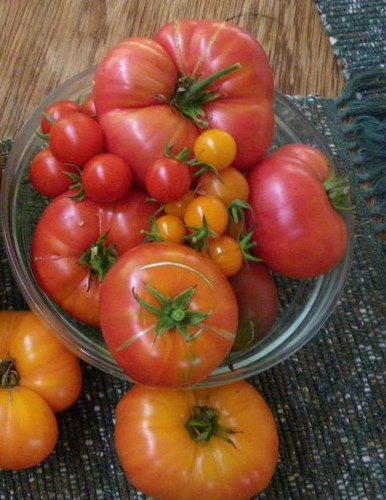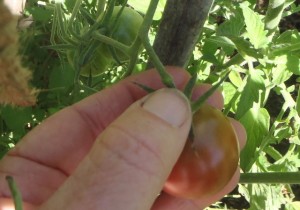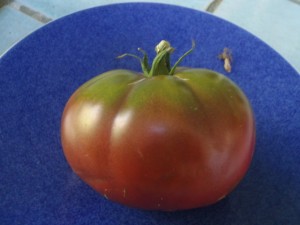It’s often hard to find a ripe, delicious tomato in the store. For that reason, tomatoes are one of the most popular plants to grow in the home vegetable garden. Tomatoes for large scale agriculture have been bred to have tough skins and are picked unripe in order to ship them in large containers without getting squished. These tomatoes have nothing in common with an old fashioned, well grown tomato, picked ripe.
This blog is not about how to grow a tomato, of which there are many varieties and can be grown in many locales. That’s for another day. What I will talk about is the meaning of the surprise markings on many heirloom tomatoes.
We usually think about ripe tomatoes in terms of red. Green means not ripe. WRONG! The green shoulder on a tomato influences the amount of sugar in the ripe fruit. If green shoulders don’t sound familiar, that’s because most commercial tomatoes don’t have them anymore. The dark green parts have more chloroplasts, which turn sunlight into sugars. Scientists think that increases the amount of sugar in the tomato by about twenty percent. You can read more about it in this article from UC Davis Food and Science Department.

Tomatoes come in many colors and shapes. They have different flavors as well. It’s worth growing your own.
Watch your tomatoes as they grow, and when they start turning color, whatever color they’re supposed to be, pick them while they’re still a little firm. If possible hold back on the irrigation before harvesting. It makes them sweeter.

There is a little section near the top of the tomato. Pick it at that section and leave the cap on. The tomato will keep better and you won’t be as likely to rip off the whole branch.
There’s so much to learn about growing the healthiest and best tasting fruit and vegetables, but the most important part is to just start! Let me know what your favorite tomato varieties are.

 Follow
Follow

